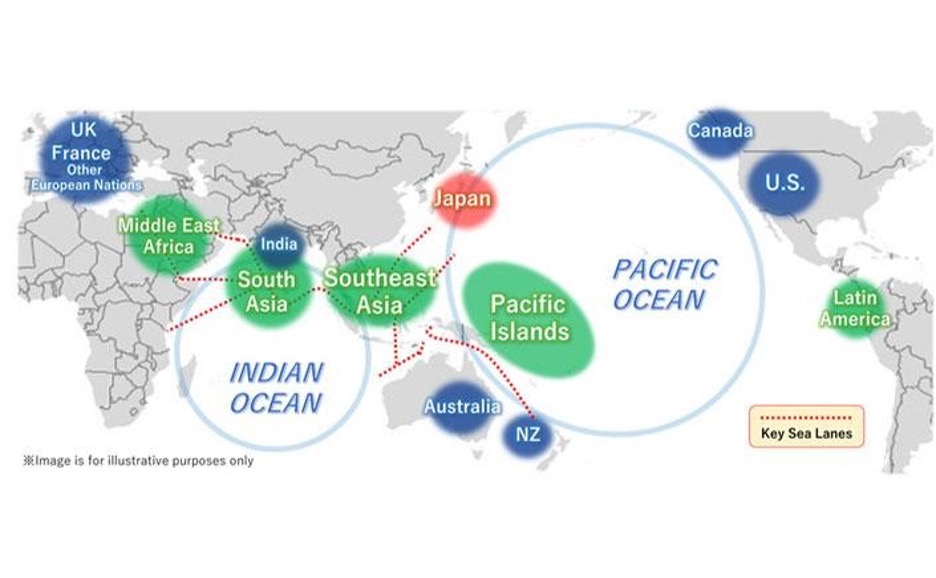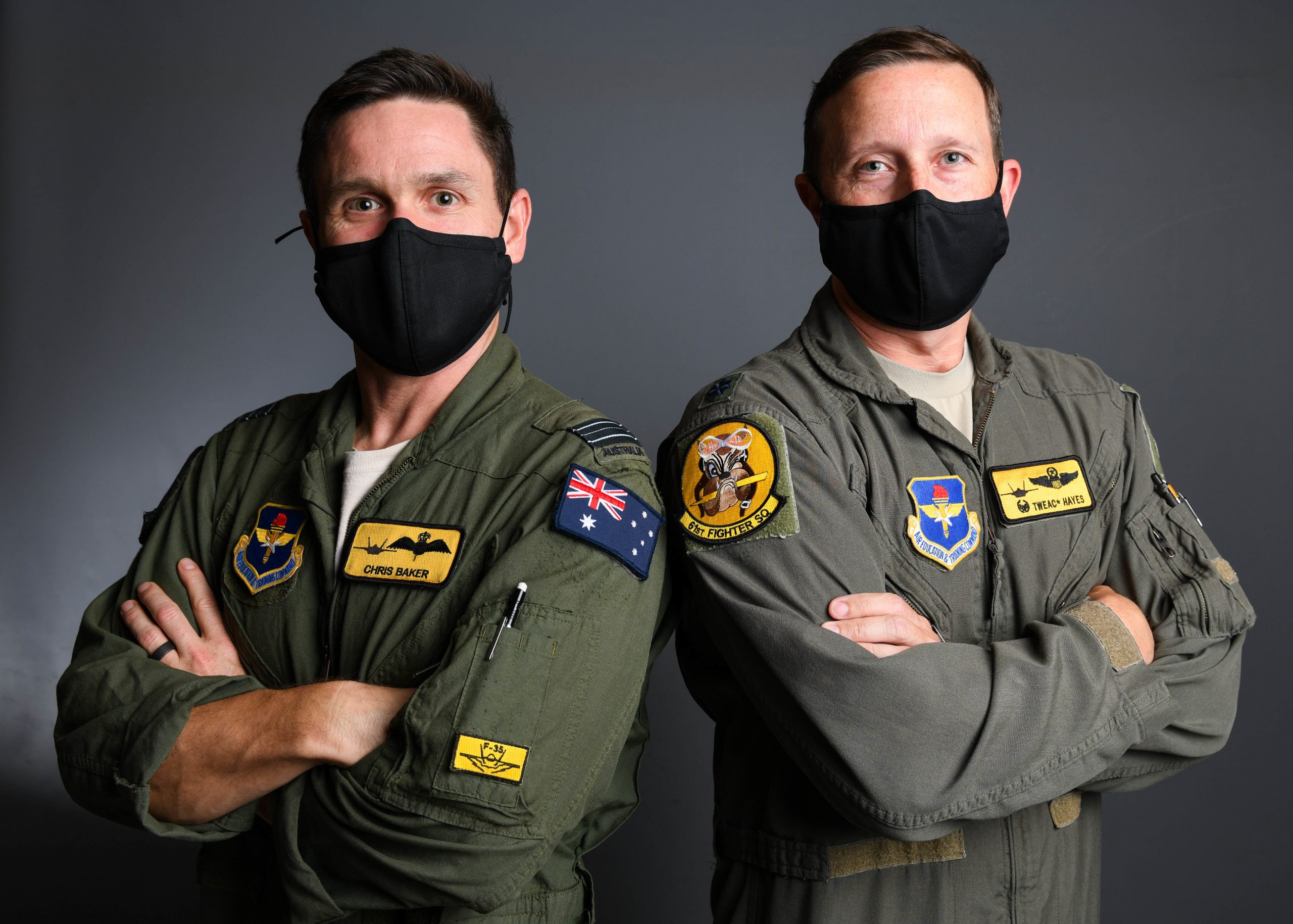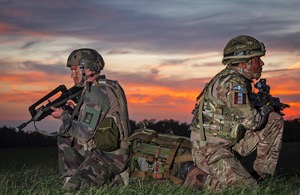With the coming of Brexit and the continuing challenges to sort out the relationship with the Continent, a key question is how the two most significant defense players in Europe, France and Britain, will sort out their relationship going forward.
We discuss this at some length in our new book on European defense, and clearly the Lancaster House agreements signed 10 years ago this year are important in this regard.
As Murielle Delaporte noted in the book: “The Lancaster House Treaties are one of the children born from the Anglo-French honeymoon of the early 2010s, concluded between Prime Minister Cameron and French President Sarkozy after the French decision to rejoin NATO. A year later, the intervention in Libya was a live test of the determination and ability of an Anglo-French-led joint air operation with President Obama’s America, then “leading from behind.” From a strictly military perspective and the standpoint of the Anglo-French military relations, it is a landmark in the conduct of joint air operations within a coalition.”
Recently, the UK Ministry of Defence highlighted the 10th Anniversary with an article published on November 2, 2020:
Ten years ago, the UK and France signed treaties at Lancaster House on defence and security, and on nuclear cooperation. This historic commitment has helped establish a long-term partnership and provides a framework for a joint response when mutual interests are at stake.
One of the key goals of the treaties was to establish the Combined Joint Expeditionary Force (CJEF) combining two of the world’s strongest militaries to tackle shared threats. The force has reached full operating capacity and can now rapidly deploy over 10,000 personnel in response to a crisis to fulfil a range of tasks including high intensity operations, peacekeeping, disaster relief or humanitarian assistance.
As part of CJEF training, this week British and French paratroopers will come together for Exercise Wessex Storm on Salisbury Plain. This sees soldiers from the French 2e Regiment Etranger de Parachutistes (2e REP) attached to the 2 PARA Battlegroup. Both units regularly train together to maintain their partnership so they are ready to deploy alongside each other.
Defence Secretary Ben Wallace said:
“Today, the UK and France face a range of security threats of increasing scale and complexity. Having a highly capable, high readiness force is essential if we are to protect both UK security and the security of our NATO allies.
“It is testament to our close defence relationship that we have achieved all the milestones set out in the Lancaster House treaties 10 years ago, working together to protect our mutual interests.”
As part of the Lancaster House treaties a number of other 10-year goals were set alongside establishing CJEF. These included building a joint nuclear facility, increasing cooperation around the aircraft carriers and developing the UK and French complex weapons sectors. All of these goals have been achieved within the 10 year time frame set by the agreements and will be taken forward further as both nations look to build on the existing work.
The UK and France are deployed around the world together in places such as the Middle East to combat Daesh and Estonia as part of NATO’s Enhanced Forward Presence. In Mali 3 RAF Chinooks and 100 UK personnel are deployed in a non-combat role in support of French counter-extremist operations.
The UK will continue to cooperate with our European partners in the future following the UK’s departure from the EU. We will continue to be a key player in Euro-Atlantic security and defence through our leadership in NATO, which will always be central to the UK’s security, our values and our place in the world.
Joint declaration of the French Minister for the Armed forces and the British Secretary of State for Defence for the 10th anniversary of Lancaster House
On November 2, 2010, France and the United Kingdom (UK) signed the Lancaster House Treaties establishing a long-term bilateral nuclear, defence and security partnership. We mark their continuing importance to both our countries today, on their tenth anniversary. In the face of the changing defence and security challenges we both face, the United Kingdom and France share a strong and deep defence partnership, with a permanent and comprehensive dialogue on defence and security issues at all levels and a shared desire to increase ambition across the relationship. Since 1995, France and the United Kingdom, Europe’s only nuclear powers, have clearly stated that they can imagine no circumstances under which a threat to the vital interests of one would not constitute a threat to the vital interests of the other.
The high level of mutual trust is illustrated by our daily and unprecedented defence cooperation. We are leaders in security and defence. Our two nations invest nearly 40% of the defence budget of European Allies, and more than 50% of the European spending on research and technology. We are proud of our Armed Forces and on this important anniversary we pay tribute to all they accomplish together. We will continue to work alongside each other, through NATO, and in other fora such as the European Intervention Initiative, to address those common challenges and strengthen our collective defence and security.
Over the last ten years our armed forces have worked together to deliver the closer integration envisaged in 2010. We are delighted to announce today that the Combined Joint Expeditionary Force (CJEF) we committed then to develop has now reached full operating capability . This represents the successful conclusion of an extended 10-year programme of development and training. Our Armed Forces are now closer and more interoperable than they have ever been.
As a result, we have at our disposal a flexible tool through which we can deploy up to 10,000 or more soldiers, sailors and airmen together on missions covering the full range of operations, from providing help after natural disasters to the most complex high-intensity combat operations. This capability is a unique European contribution to wider Euro-Atlantic security. And we are not resting on our laurels. We are taking forward a programme to consolidate and adapt what we have achieved to ensure it remains fitted to the changing environment, including in areas such as CIS, cyber, space, intelligence sharing and information management. We will also use the CJEF framework to improve further the interoperability of our Armed Forces’ future equipment, logistics, engineering, medical and energy systems.
But CJEF is not and will not be the only way we operate with each other. Our people continue to work together almost continuously in different theatres in many ways. The ability to conduct combined military operations remains a fundamental goal. At the moment our armed forces are engaged together in the Levant against Daesh in operations Chammal and Shader as part of the international Coalition.
UK personnel have been directly supporting France’s operation Barkhane in the Sahel since 2018 with the deployment of three CH-47 Chinook heavy lift helicopters to Mali. French forces have supported the UK-led NATO enhanced Forward Presence deployment in Estonia and we have both contributed to NATO’s air policing missions. Our Air Forces work together daily to protect our airspace against incursions or terrorist attacks. Our Navies work closely, bilaterally and through NATO, on maritime security in the Northern Atlantic and the High-North. When possible we have coordinated and supported each other’s maritime deployments further afield, in the Gulf and Indo-Pacific, and we are working to develop this further.
Ten years ago we also set out our goal to have, by the early 2020s, the ability to deploy a UK-French integrated carrier strike group incorporating assets owned by both nations. Since then UK ships and personnel have regularly supported deployments by France’s Charles de Gaulle, and the Marine Nationale has supported the Royal Navy’s work to sustain UK carrier operating skills and experience. We look forward to HMS Queen Elizabeth working with Charles de Gaulle next year for the first time and to bringing this cooperation to the new level of mutual support and engagement envisaged in the coming years.
Alongside this continuing military and operational cooperation, we continue to work together to deliver new capabilities and equipment. Ten years ago we agreed to take forward a strategy for the British and French Complex Weapons sector, “One Complex Weapons”, working towards a single European prime contractor, underpinned by a series of joint Complex Weapons projects.
Cooperation on missiles remains at the core of our armament cooperation.
In particular:
- the joint Sea Venom anti-surface missile project we anticipated then will soon be entering UK service;
- working with MBDA we have created joint Centres of Excellence on specific technologies in the UK and France reflecting the principle of mutual interdependence, helping us share information more effectively and deliver efficiencies;
- and we have made good progress with the joint concept phase for the flagship Future Cruise/Anti-Ship Weapon (FC/ASW) project and will now be conducting our respective national project scrutiny and approval processes over the winter in advance of a decision on a follow-on joint assessment phase in 2021.
The depth of our cooperation allows us to share our missiles roadmaps and operational requirements at the earliest stages, with the objectives to examine whether synergies can be found and to analyse whether a future rationalisation of our respective missiles portfolio would be relevant and cost-effective for both parties.
The export mechanisms set in the One Complex Weapons intergovernmental agreement have proven effective and there are options for further works in this domain. Likewise, managing exchange of national sensitive information is an increasingly important element in our cooperation.
Hence, we renew today our commitment in addressing any issues that might arise due to their direct impact regarding the programme performance, efficiency and cost.
The continuing health of MBDA as the primary European Complex Weapons company testifies to our overall success in this area, and we are now developing a Joint Vision to shape deeper cooperation in the next decade.
Our joint Maritime Mine Counter Measures (MMCM) project has made significant progress in developing a world-leading autonomous mine hunting system. Sea trials conducted on the French and British coasts in 2020 have proved the autonomous vehicles’ capability to hunt sea mines. The production contract will be signed later in November and the first operational capabilities will be delivered in 2022. We also continue to work together on Future Combat Air technology, and are considering the scope to work together in other areas in advance of the next UK-French Summit in 2021.
We also continue to make progress under the Teutates Treaty we signed in 2010 with the delivery of the joint nuclear facility at Valduc in France to model performance of our nuclear warheads and materials to secure their long-term viability, security and safety, supported by a joint Technology Demonstration Centre at Aldermaston.
Ten years on from Lancaster House, our Armed Forces are better able to operate together around the world when we ask them to do so than they have ever been. Now we must take this work forward.
We commit to building on the achievements of the first ten years of the Lancaster House accords in the decade to come – including at the UK-France Summit in 2021. Thus, France and the UK will continue to consult each other closely and at all levels on key international defence and security matters.
Only the preservation of a deep and ambitious bilateral cooperation will allow our two Nations to provide an appropriate response to the current and future threats and challenges.
Our book highlights what we see as the way ahead:
The UK and French political leadership have been clear about the importance of enhancing their bilateral relationship as the most significant military powers in Europe. British authorities have repeatedly gone out of their way to stress that the UK still belongs to the European continent and remains fully committed to its defense. It’s this separation between national security and foreign relations that many observers have missed.
Many of them are however worried that with the divorce between the UK and the EU, bitterness and tensions—as well as the potential cost and time involved—could drive the British Isles more inward and away from Brussels: a risk, which could lead to a decoupling that only Moscow would value. Many signs are pointing in that direction, as the post-Brexit agreement is not being negotiated very smoothly on either side. But like in any divorce, the hope is to preserve the fruits of the union past, and, in the case of the subject of this chapter, there are many such fruits.
The book can be bought through our website:

The book is available as of October 28, 2020 on Amazon in an e-book version.
The paperback version will be released on December 22, 2020.
Over the next few weeks, the book will be available on a wide range of book sellers as well but the following are offering the e-book now but the paperback on release date: SCRIBD, KOBO, ESENTRAL, and CIANDO.






